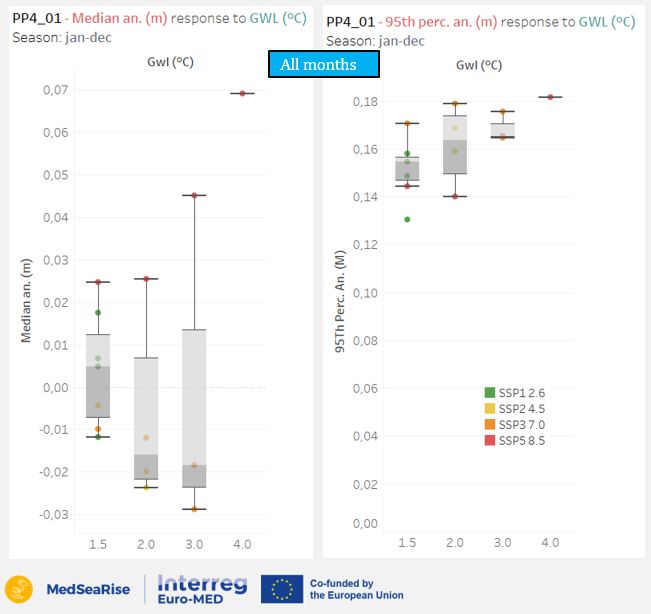
News
Sea level rise uncertainties and Global Warming Levels
11/11/2024

News
🔹 Thanks to a specific project action, these datasets are created based on ensembles of numerical simulations 📈 from future climate scenarios, sourced from international scientific projects 🌐.
🔗 For case studies aiming to assess the risk sensitivity of sea level rise trends, it’s necessary to link local sea level evolution with global warming scenarios 🔥.
🌡️ Global Warming Level (GWL) represents the average air temperature rise 🌞 close to Earth’s surface, compared to the pre-industrial period (1850-1900). GWLs adopted in the latest IPCC report 📑 include 1°C, 1.5°C, 2°C, and 4°C, and MedSeaRise analyzed sea level scenarios for each GWL across Mediterranean areas 🌐.
🔎 Results show that the uncertainty around sea level rise data impacts sensitivity to GWLs, especially at extreme levels 🚨 (see figure 1). This finding sheds light on how sea level scenarios must be integrated into risk assessments 🛠️.
📈 Ongoing work is investigating the large uncertainties within multi-model ensembles, aided by a recent workshop with sea level rise experts 🧑🔬 held in Kotor, Montenegro this past October.
🌡️ For comparison, local air temperature responds more sensitively to GWLs, though with seasonal and geographic differences 🗺️ (see figure 2&3).